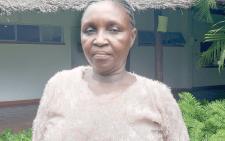Protecting king of the jungle

The decreasing numbers of lions in the country and world has created concerns about their future. In Laikipia, the Lion Landscapes Rangers are at the forefront to protect them.
Harriet James @harriet86jim
In the harsh heat of the Savannah sun, Victoria, the mother lioness, was seated under a tree in the Loisaba conservancy. With her were her three six-month old sons.
The harshest of all females, she’s 11 years old and her pride is the largest, comprising of 17 cubs — hers and her sisters’.
She is one of the collared lions safely guarded by the Lion Landscape Rangers, a unit created three years ago to promote human-carnivore coexistence in the area.
The Laikipia-Samburu ecosystem is said to support the third largest population of lions in Kenya.
However, it is difficult for communities living in these areas to co-exist with them as the lions kill livestock and sometimes humans.
Listed as vulnerable
Consequently, people use poison to kill them, leading to a reduction in their numbers in the country and globally.
According to Panther, there are about 20,000 lions in 26 African countries and over 95 per cent have vanished.
Habitat loss and fragmentation, illegal bush meat trade, unsustainable trophy hunting (in South and West African countries), and conflict with humans are the major causes of their decline.
Presently, lions are regarded as “vulnerable” on the International Union for the Conservation of Nature (IUCN) Red List of Threatened Species.
“In 2017, most lions in Laikipia were exposed to livestock, making them become an easy target.

Though communities have moved away because of this, our organisation has received overwhelming requests for assistance in livestock being killed by lions and other carnivores.
Whenever these communities don’t find assistance, they resort to poison, which kills the lions and in return the entire food chain where the scavengers and carrion birds are also affected,” explains Antonia Leckie, the project manager at Lion Landscape Rangers.
Boma advice
Dr Alayne Cotterill, founder and director of Lion Landscapes, has been working in the area for now 19 years on various projects in Laikipia— something that has given her an understanding on how to safeguard the lions through the rangers.
The rangers work closely with the Kenya Wildlife Service and rely on them for a collaring permits and a veterinary doctor.
Each lion has a tracking collar that alerts rangers on their whereabouts. Whenever they come close to a boma (homestead), the rangers call them back using a speaker phone, set up with pieces of meat like a dead camel or whatever is available.
They place the gadget and tune it to the sound of a female calling for a mate or a dying animal to attract the lion.
When the lion comes to inspect, it is sedated by a vet and its measurements for the teeth and tail are taken for scientific research and transmitted to a satellite where it can be accessed.
The vet, then, gives the lion a drug to reverse the sedation and send it on its way. The data is stored in a database to assist in decision making or planning.
Rangers are also rapid response officers who train herders on how to protect and save their cattle whenever they encounter a lion. They call this boma advice.
“They point out situations that can be rectified to prevent large carnivals from killing livestock. For instance, if the boma has a huge hole in the fence, the rangers advise families to cover the hole,” says Antonia.
If a collared lion crosses the boundaries, Thomas Mojong, the ranger in charge of conflict, gets a notification and handles the situations. Individuals can also sign up for these notifications.
Slow acceptance
“If they hear of an incident, rangers head over to the location and collect the data and assess the situation such as whether a herdsman was present and if he was able to analyse the data and information sent by rangers. If a homestead relocates, rangers track where they are at all times so as to warn them of any attack,” adds Antonia.
When the project began, rangers found it difficult convincing the community on significance of protecting lions.
But by working closely with livestock owners and by learning lion movements every day, rangers lessen clash by warning livestock owners of the animal’s whereabouts and shadowing them when they move into areas with high conflict risk.
“In the past, you had to go politely otherwise locals could attack you. They feel as if the organisation has a right to pay them for their loss — for not allowing them to kill the lions when they attack their cattle,” narrates Thomas.
However, with more children sponsored to attend school and community benefiting from the lions, they are slowly but surely heeding the call to preserve the lions.












